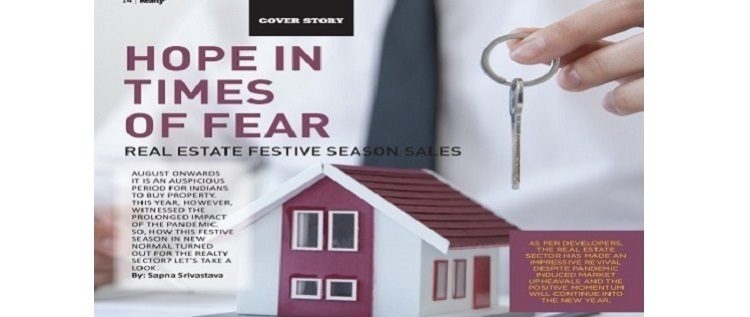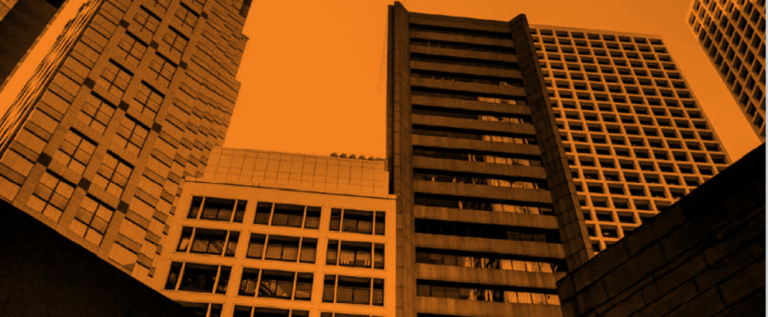The Ongoing Coronavirus Crisis And Social Distancing Norms Have Created An Increased Awareness Of How Our Surroundings Can Impact Health And Productivity. Architecture And Design Have For Long Been Touted To Impact Mental Health And Wellbeing.
By: Leandra Monteiro
Being cooped up within our homes for the last few months has no doubt taken a toll on us. As a social species it is not possible to be confined within the walls of ours houses, hence outdoors play a major role in our lives.
Positive mental strength is not only associated with gardens with a nature focus, but also with green spaces characterised by recreational and physical activity. Research has demonstrated that adequate provision of public green space in local neighbourhoods and within walking distance is important for positive mental health.
REVAMPING URBAN SPACES
The notion of urban space as “private” or “securitised” is only a very recent phenomena. In her seminal book, “Ground Control”, Anna Minton describes in detail how spaces between private buildings and city infrastructure have been appropriated by private interests to serve the ideal of “ideal urban spaces”. These neatly designed, paved, planted and gated spaces add very little to the urban experience besides alienating those who cannot penetrate them. Malls follow a similarly securitised model of public use, where the user must be subject to searches and surveillance if they intend to use the space as an urban experience.
On the other hand, streets, markets and colonnades do not discriminate on the passage of users and are therefore truly belong to the public domain. This is the domain to which the majority of the public will now return, free of being frisked and otherwise encumbered. The bazaar and the maidan will re-emerge as intrinsically Indian spaces, meant for the non-paying user to participate both as voyeur and as object.
Ar Prashant Deshmukh, Founder & CEO, Prashant Deshmukh & Associates shared, “The Lockdown condition have taught us to create better urban spaces which could relieve mental stress of citizens. We could probably create more town spaces, town squares spread out town halls and plazas as they are the characters in Europe, US and most of the developed countries. These breakout spaces provide for better air quality and environment that help relieving the mental stress. Having learnt the value of open spaces through the pandemic conditions we will be forced to design open space which are cleaner and healthier and which may maintain the social distancing and probably the design of Shopping Malls and Theatres could provide for similar open space within Interior preferably open to sky so as to avoid chilled air-conditioner and provide for natural air.”
All endearing public spaces - the Greek Agora, the Venetian Plaza, the Parisian Street and the Indian Bazaar all have the same essential elements. Spiro Kostof, the acclaimed urban theorist, laid bare the key elements of each of these spaces in his book, the City Assembled. They are free, the allow citizens to see and be seen, and they are a source of food and entertainment. These qualities celebrate the essential human nature in all of us. We need to be amongst people, to feel community and to be recognised as part of it.
Amit Khanna, Design Principal, Amit Khanna Design Associates elucidated, “Public spaces must firstly be free. They should allow for repose, rather than being intended solely for consumption. They should also be equitable, and not discriminate as to who can or cannot be part of them. Lastly, they must be central to the city’s transport nodes. A leisure valley far removed from the everyday experience of the city is not an urban space, while a congested corner market might be perfectly located, but insufficiently scaled. Marine Drive is a fabulous urban space with a unilateral aspect, while Lodhi Garden is inaccessible to most, yet far denser in experience.”
INDOORS THE NEW OUTDOORS
Research over the years has shown that when people are more stressed, anxious and socially isolated, as we are right now due to the global COVID-19 pandemic, having access to parks, trails and natural areas becomes even more important.
As we currently don’t have that much access to the outdoors and it is also a safety issue, the only respite is to incorporate outdoor features inside our homes. The famous Architect and Designer F.L. Wright stressed upon the outside moving inside design concept for relating interior spaces with the outdoors and the outdoors spaces bring in fresh air, freshness and energise the interiors. Different kind of courtyard closed, semi closed, flowing courtyard can creep into interior to make the interior space part of the outdoor. They would add fresh air, fresh light proper ventilation and screening of dust thus improve the quality of our Interior spaces.
IN CONCLUSION
According to the National Alliance on Mental Illness, one in five adults experiences mental illness each year. With twenty percent of the population already directly impacted by mental illness, and elevated levels of stress, anxiety and uncertainty due to the COVID-19 outbreak impacting all of us, it’s imperative that people find ways to prioritize their mental health and manage the stress of this pandemic in positive ways. To cope with stress, open spaces such as spending time in parks, on trails, and in open spaces and natural areas is another effective way to cope.
Hence to help improve mental health in our communities we need to have well-managed urban spaces and better urban planning of natural areas. This is especially important during times of stress and crisis. We can learn from the needs of today and better plan for addressing stress and mental health in the future.



















